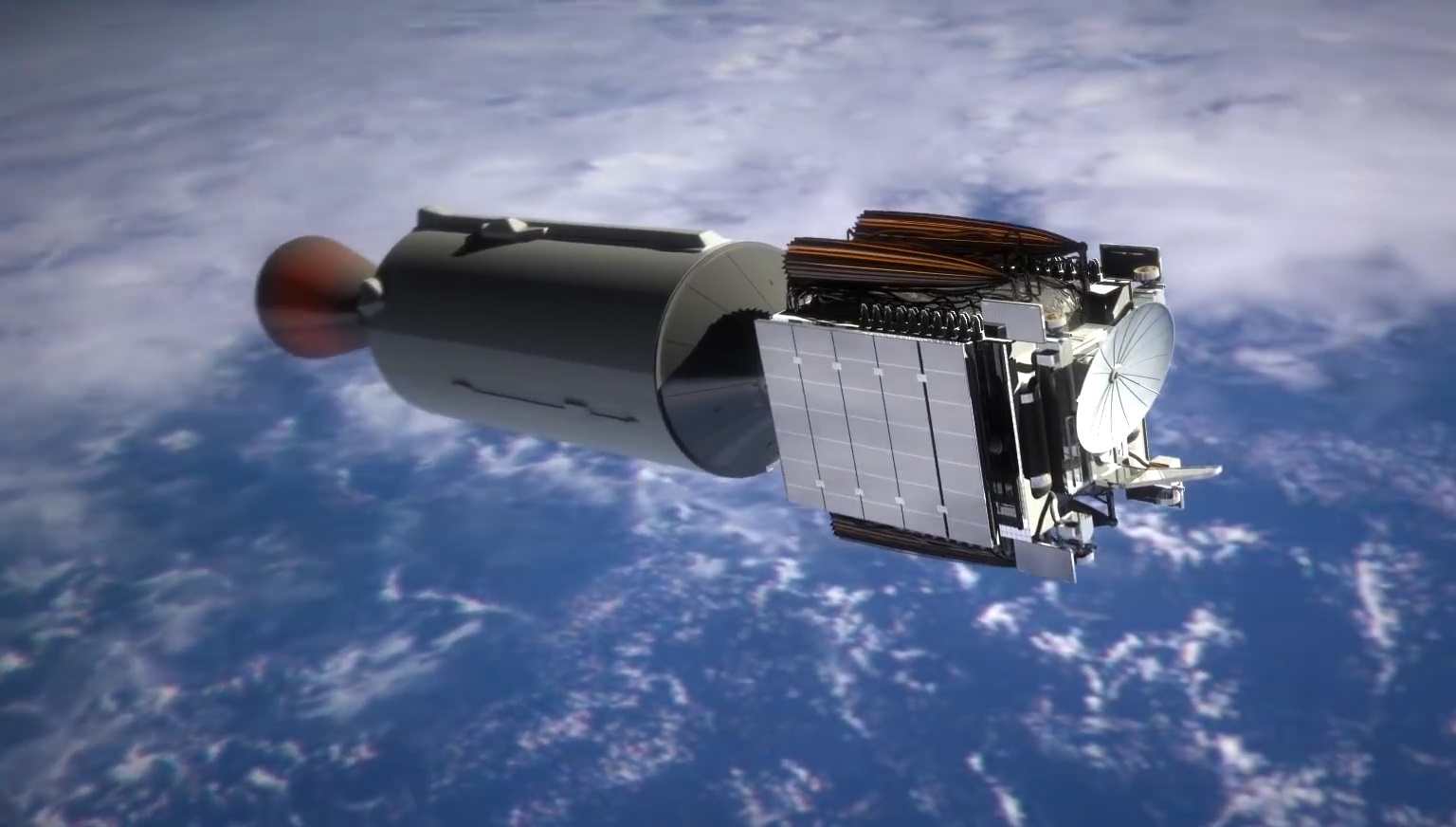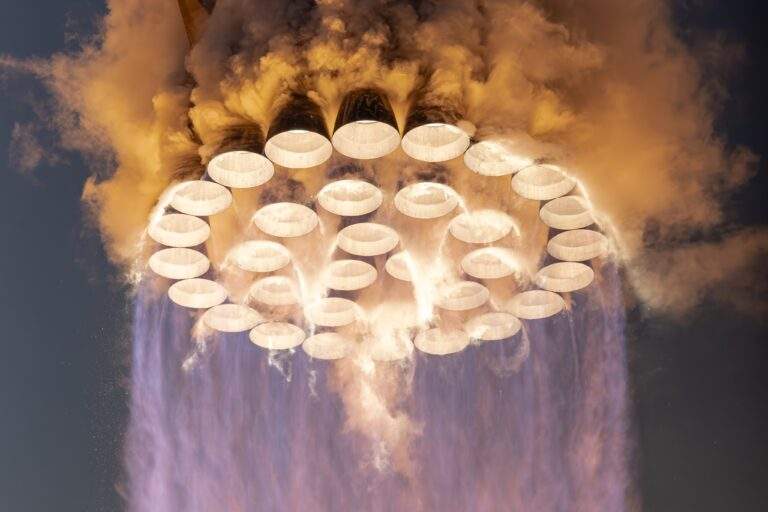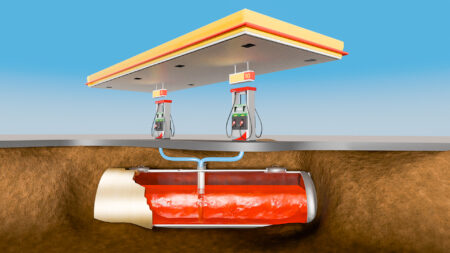On the 12th of February 2015, a Falcon 9 rocket lifted off from the Kennedy Space Center. This was SpaceX’s very first interplanetary mission, sending a climate observation satellite into space. But after deploying the satellite, the Falcon 9’s upper stage was left in a highly elliptical orbit around the Earth.
Now, after spending 7 years in space, the upper stage is about to crash into the far side of the Moon. Astronomers believed that it would soon crash into the far side of the Moon.
When a rocket deploys a satellite into Earth’s orbit, it typically performs a deorbit maneuver to safely slow the vehicle down until it burns up in Earth’s atmosphere.
Falcon 9 gets left in orbit
However, this particular Falcon 9 was launching a satellite out to Lagrange point 1, where the gravitational forces between the Earth and the Sun cancel out and hold objects in place. Since this point is so far away, the Falcon 9 didn’t have enough propellant left to return and de-orbit around Earth. For most missions to Earth’s orbit, the Falcon 9 will use its last bit of propellant and de-orbit into an area of the Pacific Ocean.

Long lost space junk
But this isn’t the first piece of space junk to end up like this. With enough time, objects stuck in this kind of orbit either collide with the Earth or the Moon – or they come close enough to receive a gravity assist, which slingshots them out into an orbit around the Sun.
But if this Falcon 9 really is a piece of space junk, it will be the first time that space junk has ever unintentionally collided with the Moon.
In the past, scientists have purposefully crashed their space junk into the Moon, in order to retrieve data about the Lunar surface. In 2009, NASA launched an observation satellite, in the hopes of detecting water on the Moon’s Southern pole. After separating from the satellite, the Centaur rocket stage purposefully crashed into the Moon at two and a half kilometers per second.

As the debris plume rose 10km above the Moon’s surface, the observation satellite went right through it and collected samples. The data showed many different materials were present, but most importantly, it confirmed that there really was water on the Moon.
During the Apollo program, the Lunar Module’s upper stage was crashed into the Moon on several missions to trigger seismometers that had been placed there by the astronauts.
When this object strikes the Moon, it’s unlikely that it will hit at a time and place that’s visible to any satellites. Our presence on the Moon isn’t good enough to have high quality satellite mages of every part at any given time. Predicting the exact time and place of the impact is a big challenge, especially since the object is only visible to us for small periods of time.
Close flyby of the Moon
Initially, astronomers saw this object make a close flyby of the Moon just two days after the SpaceX Falcon 9 launch. The object had just about the exact brightness you would expect from a rocket booster and showed up at the expected time.
And so, this object was tentatively identified as the Falcon 9 upper stage. For 7 years, this object basically went unnoticed until the recent realization that it was heading for the Moon. Astronomers recently did a similar thing with an old rocket stage from the 60’s.
In a previous story, we looked at the old Centaur rocket stage which after 50 years in space, made a surprise reappearance around Earth. In order to predict orbits, astronomers need to understand how the gravity of the Earth, Moon, Sun and other planets affect these objects.
They also need to know a good bit about the object itself. Luckily, since this is an artificial object and not an asteroid, we have the data. This empty Falcon 9 upper stage has a mass of around 4 tonnes and is roughly the size of a city bus.
Astronomers were able to predict the exact location of this object’s impact to within a few kilometers. When predicting an object’s path with this much precision, even things like the Earth’s slightly weird shape can be very important. The Earth isn’t a perfect sphere. Due to its constant spin, it bulges out at the equator by 43km. And so orbits that pass the equator are affected by the slightly stronger gravitational pull compared to orbits that pass over the poles. Although this is such a small detail, ignoring this information would change the location of the object’s impact by over 170km.
Constantly changing orbit
Every now and then, the path of this object gets changed when it comes close to the Moon. Some of these gravitational effects can be very small, but any inaccuracies early on in the predictions will accumulate and make the predictions way off. But what is perhaps even trickier to predict, is how the Sun’s radiation will affect the object. The radiation which blasts out from the Sun exerts a small but constant force on objects in space, like a very gentle breeze.

Since this object is believed to be just an empty metal tube and not an asteroid, it’s very lightweight but still has a large surface area. This makes it much more susceptible to the solar winds than a dense and heavy asteroid. Astronomers can get a rough idea of how the sunlight is pushing the object around, but predicting exactly how the sunlight bounces off the object is very difficult.
This is even trickier since the object is constantly rotating, therefore the forces acting on the rocket will be different depending on how much surface area is facing the Sun.
Astronomers were able to measure how the light from this object varies, giving them a light curve which shows the object is rotating once every 90 seconds. With this information, astronomers can quite precisely plot the object’s path for the near future.
On the 1st of January, the object made a close flyby of Earth before climbing back up to its apogee beyond the Moon. On the 5th of January, it came within 10,000km of the Moon, which pulled the object in and changed its orbit slightly. It then made another two orbits of Earth before being thrown into a much larger loop. From then on, the object will reach its apogee for the final time before crashing into the far side of the Moon on the 4th of March at around 2.6 km/s.
It wasn’t the Falcon 9 after all
Despite being able to predict this impact with so much precision, astronomers were completely wrong about what the object actually is. After re-analyzing the expected trajectory of the Falcon 9 launch, they realized that it wouldn’t have made such a close flyby of the Moon.
And so, astronomers tracked this object’s orbit back and found that it matched with the Chinese Change-5 mission, which launched just a few months before the Falcon 9. The orbit showed it did indeed make a close flyby of the Moon 4 days after it launched.

Tracing the orbit back even further, it showed that it was parked into the usual Lunar transfer orbit, which is common for rockets going to the Moon. What’s even more impressive is that the ground path of this orbit could be traced back to an area near the Chinese launch site of Xichang and shows the object heading East. This is exactly what you would expect from a Chinese mission to the Moon.
Despite being able to track this object so precisely, sadly, the impact itself will be unobservable to our ground based telescopes, since this side of the Moon never faces Earth.
Eventually though, some of the satellites that orbit the Moon will pass over that area and image the newly formed crater. The quality will not be great, since the crater will be very small and the satellites around the Moon don’t have incredible resolutions. It’s unlikely that this will provide any new scientific information – and despite what some news sites will have you believe, it won’t cause any danger to the Moon. This old rocket booster will become just another piece of space junk left on the Moon.
Perhaps in hundreds of years when humans have a higher presence on the Moon, this rocket stage might be discovered in the same way that we discover old fossils here on Earth. When humans finally return to the Moon, they will have the incredible chance to reunite with the lost space junk of the Apollo 11 mission, which has been perfectly preserved on the Moon for over 50 years. Either way, it’s incredible that we have the technology nowadays to track and predict these objects, keeping us up-to-date with everything that is happening in the space around us.














Can you be more specific about the content of your article? After reading it, I still have some doubts. Hope you can help me. https://accounts.binance.com/en/register?ref=JHQQKNKN
I don’t think the title of your article matches the content lol. Just kidding, mainly because I had some doubts after reading the article.
Thanks for sharing. I read many of your blog posts, cool, your blog is very good.